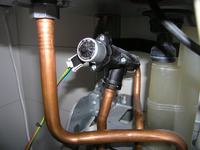Despite the end of the program every 30 minutes, the radiators were hot. I have the impression that this is a malfunction of the solenoid valve. I touch distribution copper pipes in the boiler at the valve, at the boiler outlet and at the same hot water tank, and I have the impression that the valve is strangely "blocked": some of the water is diverted to what some still goes to the hot water
It's about the UCL63Z27 valve.
Does anyone have any experience how to deal with this vulnerability? What exactly can the problem be? Is it dirty inside, does the coil malfunction? I see 4 screws.
Please, give me some tips. The boiler operated without any problems for 5 years. I kept it myself after the season in accordance with the manufacturer's instructions.
It seemed to me that 5 years ago the installer seemed to mention something, that this model can either hang up a solenoid or be damaged. I do not remember.

It's about the UCL63Z27 valve.
Does anyone have any experience how to deal with this vulnerability? What exactly can the problem be? Is it dirty inside, does the coil malfunction? I see 4 screws.
Please, give me some tips. The boiler operated without any problems for 5 years. I kept it myself after the season in accordance with the manufacturer's instructions.
It seemed to me that 5 years ago the installer seemed to mention something, that this model can either hang up a solenoid or be damaged. I do not remember.



